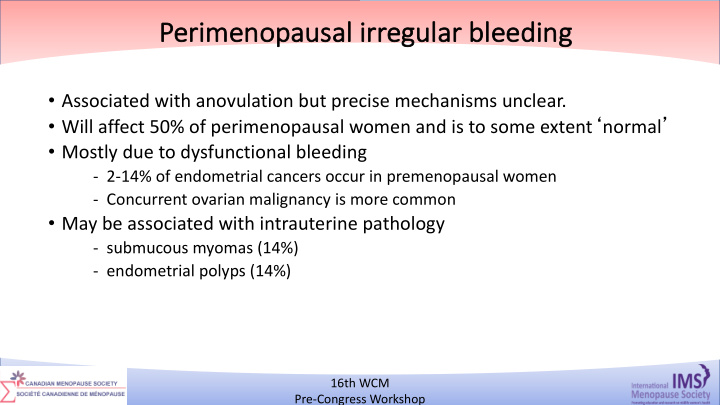



Pe Perimenopausal ir irregular lar ble leedin ing • Associated with anovulation but precise mechanisms unclear. • Will affect 50% of perimenopausal women and is to some extent ‘ normal ’ • Mostly due to dysfunctional bleeding - 2-14% of endometrial cancers occur in premenopausal women - Concurrent ovarian malignancy is more common • May be associated with intrauterine pathology - submucous myomas (14%) - endometrial polyps (14%) 16th WCM 6/4/18 114 Pre-Congress Workshop
In Inves estigation of AUB B • Menstrual history – bleeding patterns, pain, clots, • Medical and surgical history • Medications • History of haemostatic disorders • Examination: general and pelvic – Look! • Lab tests: FBC, ferritin, TSH, HCG, Bleeding disorders (when indicated) • Transvaginal ultrasound, • Saline infusion sonography, • Office endometrial sampling • Hysteroscopy and biopsy 16th WCM 6/4/18 115 Pre-Congress Workshop
No Norma mal en endome metr trium Proliferative endometrium Secretory endometrium 16th WCM 6/4/18 116 Pre-Congress Workshop
Endo Endometri rial hype perpl rplasia 16th WCM 6/4/18 117 Pre-Congress Workshop
Endo Endometri rial Polyp 16th WCM 6/4/18 118 Pre-Congress Workshop
Recommend
More recommend